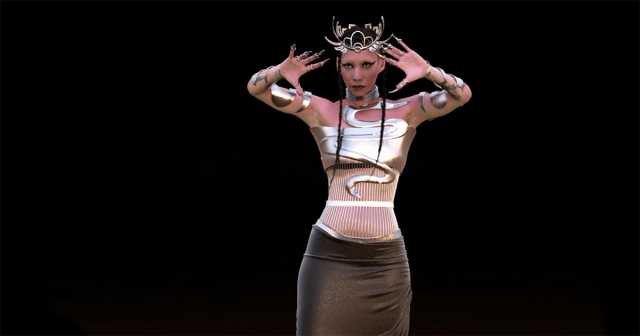
READ MORE: Digital Humans are Here — and They’re Changing Everything (Synthesia)
The next evolution of our interaction with the digital world will be virtual humans and, according to one of the companies developing the technology, it’s only a matter of time before everyone will have their own digital twin.
Digital voice assistants like Alexa and Siri are a familiar part of our lives but digital humans promise to radically change our online interactions because they will embody someone just like us.
As opposed to avatars which might be cartoonish or abstract, digital humans are intended to be indistinguishable from real people, says Ema Lukan, writing an explainer article for AI video communications platform Synthesia.
A digital human can be a digital twin of a real person (based on their anatomical, physical, and biological traits) or a fictional character (based on the appearance of an actor or entirely generated by computer).
Either way, they are designed so that other digital humans or real people can interact with them, and the fact that they look like real human beings has a big impact on those interactions, says Lukan.
There’s money to be made too. “Because they are able to replicate real-world communication on a large scale, applications of digital humans are on the rise,” he notes. “Jobs” include customer support reps, instructors for training and education, and characters in video games and films.
According to Emergen Research, the global market for digital humans will grow from $10 billion in 2020 to about $530 billion in 2030.
Digital employees of course “need no vacation, no salary, and no sleep,” says Lukan. “They are a scalable and affordable solution for businesses. They enhance our online interactions by combining verbal and non-verbal cues.
“In short, digital humans add a human connection to the virtual world, improve our communication, and thus make our (digital) lives better.”
One of the main barriers to this “brave new world” is crossing the “uncanny valley,” where a digital likeness of a human can always seem a little strange.
Synthesia suggests that this effect is still present but is likely to diminish as tech advances to the point where “digital people will become indistinguishable from real people.”
Anyone can create a digital likeness of themselves too. It can be as simple as recording 15 minutes of footage of you speaking on camera, or even a webcam. Send the file to a professional avatar creator and hey, presto, your digital twin will be sent in return, finessed using AI to reproduce the photorealistic look, movements and speech generation.
If you’re not comfortable being on camera, you can just use a “stock” digital human from a library.
Companies offering such services at consumer to professional level include Synthesia itself, which allows customers to create presenter-style videos from text input only — no cameras or microphones needed.
MetaHumans by Unreal Engine can generate realistic digital humans for use in filmmaking, video games, and virtual reality “reducing the time and complexity traditionally involved in digital character creation.”
Another company, UneeQ offers AI-powered characters that emulate human-like interactions and designed to enhance customer service across industries including healthcare and retail.
These companies use various techniques ranging from motion capture to serve as a basis for 3D modelling; natural language processing to understand voice commands and to form responses; AI to process input and to learn from patterns.
As with any new technology, there are also potential dangers ahead, not least falling prey to a bad actor using a deepfake digitally identical “you” or being duped by another synthetic human.
Synthesia says the risk of people disclosing their personal information to lifelike but not actually real humans online calls for more regulation.
As with AI in general, the risk of stereotypes and false representations of society creeping into everyday use needs to be guarded against.
There’s a whole new world online, in the metaverse of spatial internet that needs laws and boundaries.
“When our digital identities are no longer tied to the physical world, we don’t know what this means for human interactions as building blocks of our society. When everyone has the opportunity to reinvent themselves in digital worlds, it comes with consequences regarding trust and transparency,” Lukan says.
“Digital humans are here to stay. Individuals will take on new forms of identities. Businesses will accelerate their communications. Society will enter a new era of social interaction. Of course, there will be bad actors, and — as with any innovation — we will have to find ways to deal with them.”
Watch This: The Case for Digital Humans

Why subscribe to The Angle?
Exclusive Insights: Get editorial roundups of the cutting-edge content that matters most.
Behind-the-Scenes Access: Peek behind the curtain with in-depth Q&As featuring industry experts and thought leaders.
Unparalleled Access: NAB Amplify is your digital hub for technology, trends, and insights unavailable anywhere else.
Join a community of professionals who are as passionate about the future of film, television, and digital storytelling as you are. Subscribe to The Angle today!


